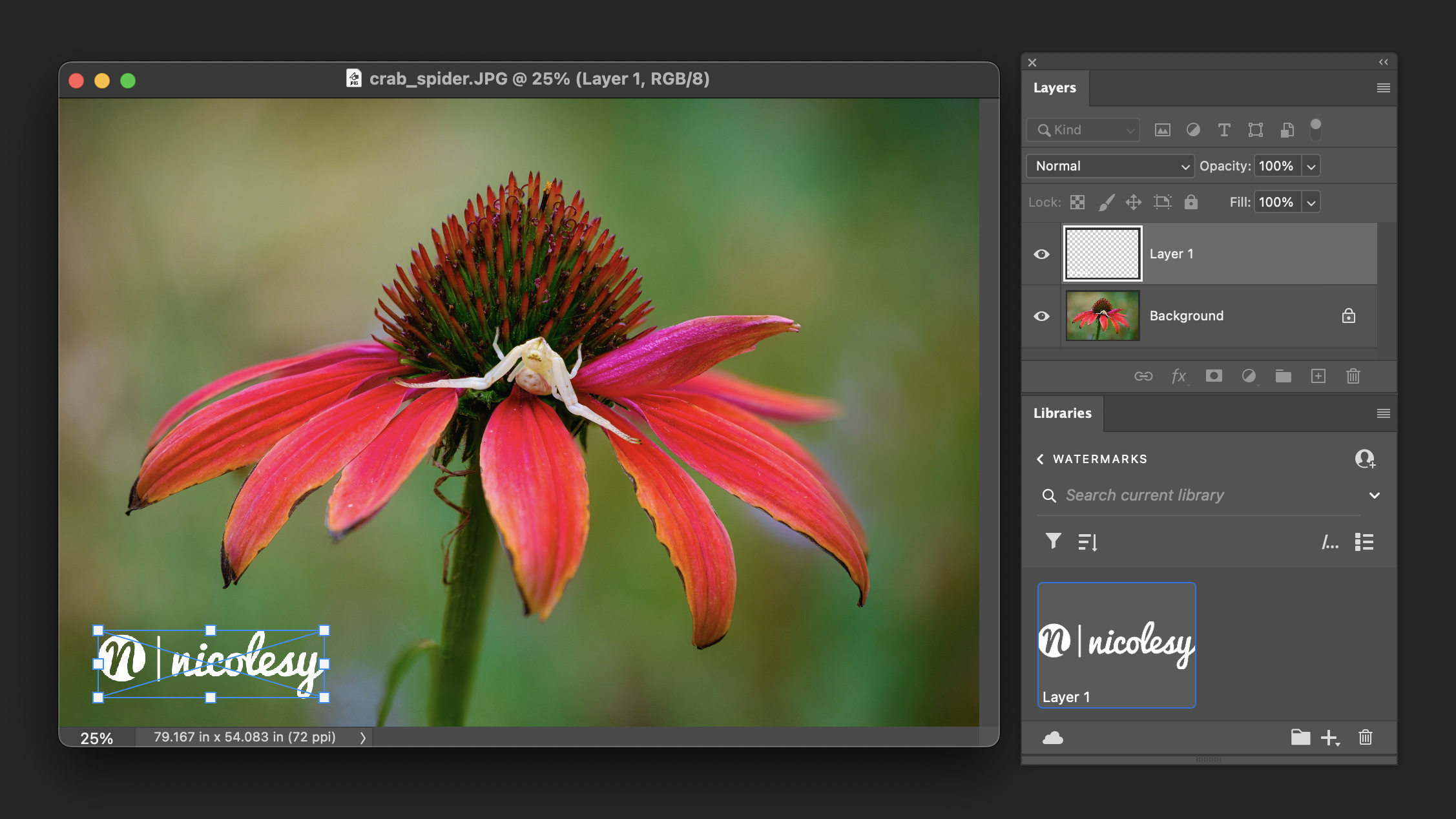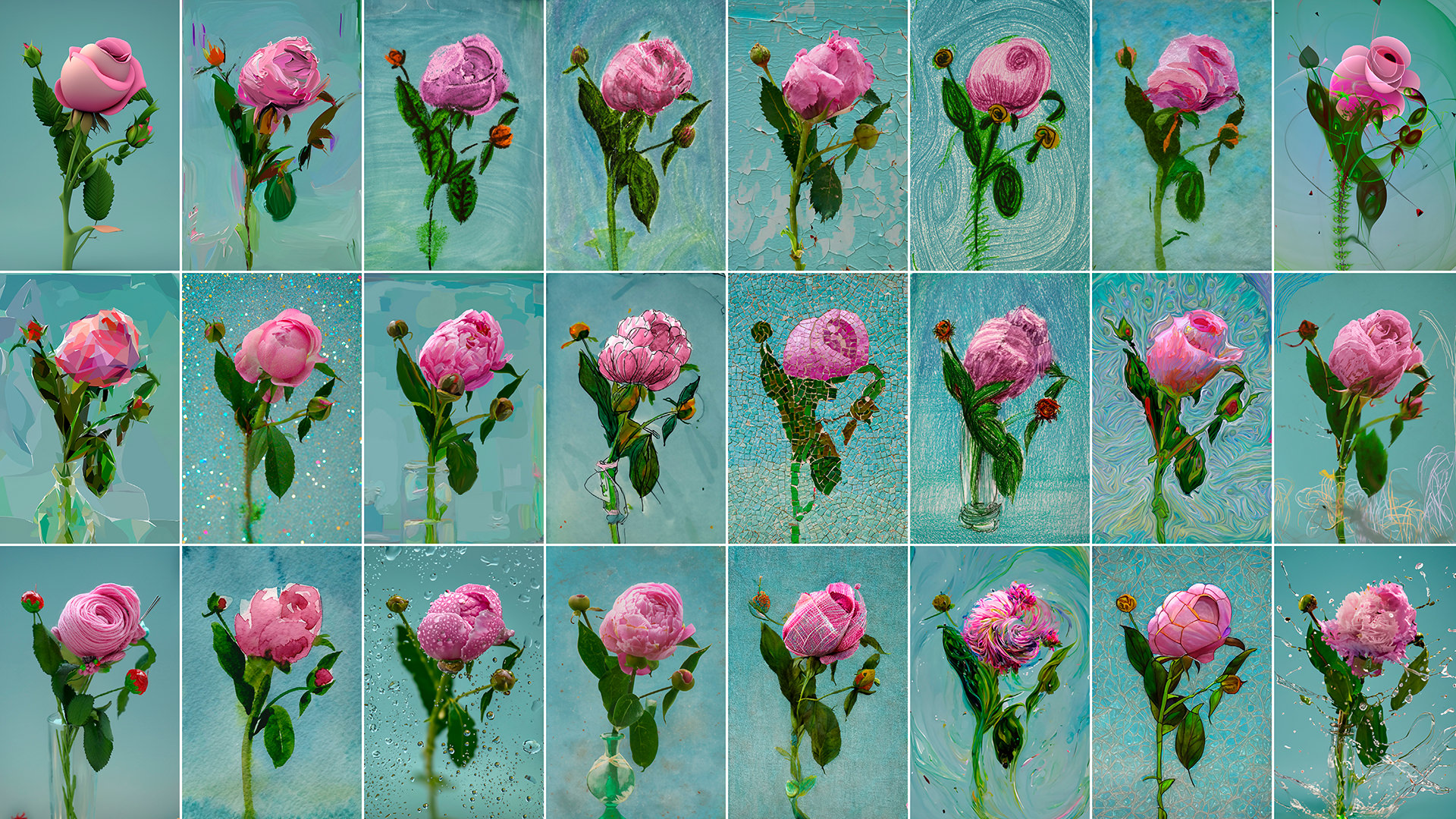Author’s note: This is a follow-up post to an article I wrote in November, 2010: “The Reality of Being a Microstock Photographer“
Next month marks my eighth-year “anniversary” with licensing my images through iStock. When I started, I was fairly new to the world of digital photography after having been using a film SLR for several years, and wanted to improve my skills. Microstock was a way for me to do just that, and with the interesting side-effect of being able to make photography a career. I owe a lot to that start and probably would not be doing what I do now if I had not discovered microstock in the first place, but the industry is definitely not what it used to be.
For those of you who have been following me on my blog and social media, you may have noticed that I rarely post about stock photography. I have a few good reasons for that, a few of which I am posting below. This post, however, is one that has been in my mind for quite some time. I wanted to share my thoughts on microstock and how things have changed (for me, personally) along with my perception on the industry as a whole.
The community has changed
One of the things I loved about iStock was its flourishing community. I met a LOT of photographer friends through iStock, and in 2009 I moved to Utah because I had so many photography connections there. I was in the forums a lot and even went to several iStockalypse events. I would hang out with the iStock HQ folks when they had booths at conferences. We definitely had some good times.
These days, the community is different. Well-known and well-loved employees at iStock HQ were either let go or left the company voluntarily. Many high earning contributors left iStock to start their own co-op stock agency, Stocksy United, and others have just become silent in the iStock forums. It got to a point where it felt like all I was seeing posted in the forums were complaints, rants, and sarcasm. (It didn’t help that few years ago they instituted a change in the royalties system that got a LOT of photographers very upset.) I couldn’t stand sorting through the angry posts any longer, so, aside from keeping updated on announcements every so often, I steer clear of the forums. The happiness and excitement just was no longer there. iStock still makes efforts to keep the community alive, but it’s just not the same. The community of iStock was the main reason that I stuck with them from the beginning, and I think it just makes me a little sad that the enthusiasm we would see with contributors banding together has dissipated.
The market is over-saturated
Even when I joined eight years ago in 2006, I felt like I was behind the curve. Photographers who had joined a few years before were making a lot more and had a full portfolio (and good search placement) behind them. That was then … but now, things have changed.
iStock has added so many photos from other organizations that it is flooding out the small solo photographers. More and more photographers keep joining, making everyone’s “piece of the pie” even smaller. It’s tough to stand out in a sea of millions of photographs (and other media), and we have very little personal branding along the way. Not only that, but there is so much crap that customers have to sort through to find the good stuff. It’s like the “Super Walmart” of stock photography … you can still get the fancy HDTV at a good price, but you have to walk to the very back of the store to get to it.
We are never in control of our fate
Working with third-parties to sell or license images is easy. We upload our photos, pay them their fee when something sells, and they take care of the rest. But what happens when they change their pricing structure? Or make a subtle adjustment to the search algorithm that pushes a large amount of our files to the back of the search? We, the photographers, are at risk of losing sales.
The realization that iStock was in control of my earnings was never news to me. I have always been aware that I can photograph and upload as many photos as I like, but one change in policy, addition (or subtraction) of a collection, or a website alteration could mean a HUGE drop in sales. Or, if for whatever reason they find a possible discrepancy with an image or portfolio (model releases, breach of contract, etc.), they have the ability to temporarily (or permanently) deactivate your account. These things don’t happen too often, and I like to think that they don’t happen without good reason, but the fact is that they can. I can recall several times when a photographer would “disappear” on iStock—their photos were gone, their profile missing—for a few days, only to reappear with no explanation. That can equate to a lot of lost sales.
Just last year, photographer Sean Locke, one of the highest earning photographers on iStock, was removed from iStock entirely. (You can read his post about it here.) In the forums, Sean was the voice of the people: He questioned policy, called out mistakes, and basically said the things we were all thinking but would never dare post publicly. In his blog post, he hints that these types of actions (one situation in particular) led to his dismissal. That, folks, is scary. (But, to be fair, it’s no different than being fired from a job for saying the wrong things to the wrong people.) Only a handful of people know the full story behind that situation (myself not included), so it’s not good to speculate. It’s just that it hits close to home, and if you are dismissed from a website like iStock, I doubt you’ll be seeing any severance pay.
I want to teach “Photography”, NOT “How to make money“
This is probably the biggest reason why you rarely see me post anything about stock photography. When I started with microstock, I did so because I wanted to hone my skills and improve my photography. After a few months of uploading photos, I started making a few dollars here and there, and I also learned a lot about photography and post-processing along the way. And then it grew. I was eventually able to make stock photography my full-time income, so I shared my photographs and my story, and would even write about it here on my blog.
Every so often I would see a post or comment online from a photographer who wants to get involved with stock photography. Too many times I would see a post along the lines of “what photos sell?” or “what types of image should I upload to make money?”. These questions bothered me to an extent, partly because there is no “right” answer, but also because I loathed trying to help people “make money” as their only goal with microstock. Sure, that’s the point of licensing images and being a full-time photographer, but to approach it from a “money-first” standpoint never sat well with me.
I believe that in order to be a successful photographer in general, one should photograph what they love and what they are good at. Don’t fill your portfolio with white-background images of people only because you know they will sell (which is less likely these days, considering the competition). Photograph what love, get really good at it, and you probably will make (at least) a few bucks.
Where I go from here
I still license images through iStock (and Getty), but I’m definitely not as active. The food photographs you see me post on this site and on social media are for my stock portfolio, but I am so busy with so many other projects that I rarely have time to upload them. As the sole employee of my business I wear a lot of hats, and I tend to shift my daily activities towards those that I know will be more enjoyable and profitable. That typically involves writing another eBook, creating new presets or textures for my online store, or just going out shooting with my friends. Processing, keywording and uploading photos to my stock portfolio might bring in a few extra dollars a few months down the road, and while I will continue to upload (slowly) to my portfolio, it’s not a priority.
It’s sad to say that I have lost a lot of faith in the world of microstock. I’m sure that, for some, it’s still flourishing, but I also know that for many of the high-sellers from back-in-the-day, things are really slowing down. For now, my stock portfolio is not going anywhere. Will that change in the future? Who knows. I still rely on my earnings from stock photography to support my income, so there’s no way I would pull the rug out just yet. I honestly wish that things were different; I love the creative community of photographers that I have met at iStock, and wish it could transform back to a place to flourish and grow. Maybe I’m just too romantic about the idea … or maybe I am just a little nostalgic for what we all used to have. It takes a community to change a community, so maybe that just means I have to take that step myself.
Author’s note: This is a follow-up post to an article I wrote in November, 2010: “The Reality of Being a Microstock Photographer“
Next month marks my eighth-year “anniversary” with licensing my images through iStock. When I started, I was fairly new to the world of digital photography after having been using a film SLR for several years, and wanted to improve my skills. Microstock was a way for me to do just that, and with the interesting side-effect of being able to make photography a career. I owe a lot to that start and probably would not be doing what I do now if I had not discovered microstock in the first place, but the industry is definitely not what it used to be.
For those of you who have been following me on my blog and social media, you may have noticed that I rarely post about stock photography. I have a few good reasons for that, a few of which I am posting below. This post, however, is one that has been in my mind for quite some time. I wanted to share my thoughts on microstock and how things have changed (for me, personally) along with my perception on the industry as a whole.
The community has changed
One of the things I loved about iStock was its flourishing community. I met a LOT of photographer friends through iStock, and in 2009 I moved to Utah because I had so many photography connections there. I was in the forums a lot and even went to several iStockalypse events. I would hang out with the iStock HQ folks when they had booths at conferences. We definitely had some good times.
These days, the community is different. Well-known and well-loved employees at iStock HQ were either let go or left the company voluntarily. Many high earning contributors left iStock to start their own co-op stock agency, Stocksy United, and others have just become silent in the iStock forums. It got to a point where it felt like all I was seeing posted in the forums were complaints, rants, and sarcasm. (It didn’t help that few years ago they instituted a change in the royalties system that got a LOT of photographers very upset.) I couldn’t stand sorting through the angry posts any longer, so, aside from keeping updated on announcements every so often, I steer clear of the forums. The happiness and excitement just was no longer there. iStock still makes efforts to keep the community alive, but it’s just not the same. The community of iStock was the main reason that I stuck with them from the beginning, and I think it just makes me a little sad that the enthusiasm we would see with contributors banding together has dissipated.
The market is over-saturated
Even when I joined eight years ago in 2006, I felt like I was behind the curve. Photographers who had joined a few years before were making a lot more and had a full portfolio (and good search placement) behind them. That was then … but now, things have changed.
iStock has added so many photos from other organizations that it is flooding out the small solo photographers. More and more photographers keep joining, making everyone’s “piece of the pie” even smaller. It’s tough to stand out in a sea of millions of photographs (and other media), and we have very little personal branding along the way. Not only that, but there is so much crap that customers have to sort through to find the good stuff. It’s like the “Super Walmart” of stock photography … you can still get the fancy HDTV at a good price, but you have to walk to the very back of the store to get to it.
We are never in control of our fate
Working with third-parties to sell or license images is easy. We upload our photos, pay them their fee when something sells, and they take care of the rest. But what happens when they change their pricing structure? Or make a subtle adjustment to the search algorithm that pushes a large amount of our files to the back of the search? We, the photographers, are at risk of losing sales.
The realization that iStock was in control of my earnings was never news to me. I have always been aware that I can photograph and upload as many photos as I like, but one change in policy, addition (or subtraction) of a collection, or a website alteration could mean a HUGE drop in sales. Or, if for whatever reason they find a possible discrepancy with an image or portfolio (model releases, breach of contract, etc.), they have the ability to temporarily (or permanently) deactivate your account. These things don’t happen too often, and I like to think that they don’t happen without good reason, but the fact is that they can. I can recall several times when a photographer would “disappear” on iStock—their photos were gone, their profile missing—for a few days, only to reappear with no explanation. That can equate to a lot of lost sales.
Just last year, photographer Sean Locke, one of the highest earning photographers on iStock, was removed from iStock entirely. (You can read his post about it here.) In the forums, Sean was the voice of the people: He questioned policy, called out mistakes, and basically said the things we were all thinking but would never dare post publicly. In his blog post, he hints that these types of actions (one situation in particular) led to his dismissal. That, folks, is scary. (But, to be fair, it’s no different than being fired from a job for saying the wrong things to the wrong people.) Only a handful of people know the full story behind that situation (myself not included), so it’s not good to speculate. It’s just that it hits close to home, and if you are dismissed from a website like iStock, I doubt you’ll be seeing any severance pay.
I want to teach “Photography”, NOT “How to make money“
This is probably the biggest reason why you rarely see me post anything about stock photography. When I started with microstock, I did so because I wanted to hone my skills and improve my photography. After a few months of uploading photos, I started making a few dollars here and there, and I also learned a lot about photography and post-processing along the way. And then it grew. I was eventually able to make stock photography my full-time income, so I shared my photographs and my story, and would even write about it here on my blog.
Every so often I would see a post or comment online from a photographer who wants to get involved with stock photography. Too many times I would see a post along the lines of “what photos sell?” or “what types of image should I upload to make money?”. These questions bothered me to an extent, partly because there is no “right” answer, but also because I loathed trying to help people “make money” as their only goal with microstock. Sure, that’s the point of licensing images and being a full-time photographer, but to approach it from a “money-first” standpoint never sat well with me.
I believe that in order to be a successful photographer in general, one should photograph what they love and what they are good at. Don’t fill your portfolio with white-background images of people only because you know they will sell (which is less likely these days, considering the competition). Photograph what love, get really good at it, and you probably will make (at least) a few bucks.
Where I go from here
I still license images through iStock (and Getty), but I’m definitely not as active. The food photographs you see me post on this site and on social media are for my stock portfolio, but I am so busy with so many other projects that I rarely have time to upload them. As the sole employee of my business I wear a lot of hats, and I tend to shift my daily activities towards those that I know will be more enjoyable and profitable. That typically involves writing another eBook, creating new presets or textures for my online store, or just going out shooting with my friends. Processing, keywording and uploading photos to my stock portfolio might bring in a few extra dollars a few months down the road, and while I will continue to upload (slowly) to my portfolio, it’s not a priority.
It’s sad to say that I have lost a lot of faith in the world of microstock. I’m sure that, for some, it’s still flourishing, but I also know that for many of the high-sellers from back-in-the-day, things are really slowing down. For now, my stock portfolio is not going anywhere. Will that change in the future? Who knows. I still rely on my earnings from stock photography to support my income, so there’s no way I would pull the rug out just yet. I honestly wish that things were different; I love the creative community of photographers that I have met at iStock, and wish it could transform back to a place to flourish and grow. Maybe I’m just too romantic about the idea … or maybe I am just a little nostalgic for what we all used to have. It takes a community to change a community, so maybe that just means I have to take that step myself.

Nicole is a photographer, published author, and educator specializing in Lightroom, Photoshop, and photography. She is best known for her books on food photography but is widely versed in various photographic genres, including landscape, nature, stock, travel, and experimental imagery.













sprouting wings is not always easy but then from what i’ve observed, you built for yourself a fairly complete tool-box and can design whatever pathway you wish.
“Somewhere something incredible is waiting to be known”
have fun and give the pup a hug from me — (miss my boy)
e
Change is not always easy…but sometimes it can bring about pleasant surprises. Hang in there!
You need to check out Stocksy. The original istockphoto founder created it since he felt that the site went into a “different” direction that where he intended.
Thanks for the comment :) I’m very aware of Stocksy, I mentioned it in my post and know a few of the “founders”. I’m exclusive with iStock which prevents me from joining, but if my exclusivity status ever changes then I will seriously consider it. Right now it would be too hard of a hit on my income to quit exclusivity (it would likely drop way more than 50% for me if I did) so I can’t make a drastic change just yet.
Thanks for sharing that, Nicole. I totally share all of those feelings, and while still relying on stock (though not iStock nor microstock alone these days), I get more and more of those thoughts that photography has to be about more than solely producing for money. And I feel I’ve made a huge jump since I decided to take the pictures I love without worrying too much if they will sell.
Great post Nicole. Once I stopped shooting “just to make money” I started to enjoy photography again. I found that’s all I was doing towards the end at iStock. I’m still there as an indie, but haven’t uploaded there in a couple years. Now I shoot what I enjoy and if it sells (at Stocksy), that’s great but either way I’m still happy I shot it.
guess it helps if I spell my name right.. lol
One thing you failed to mention is that iStockphoto was sold in February, 2006 to Getty Images. Instead of being owned by one guy, founder Bruce Livingstone, it is now owned by a large company (Getty Images) that itself is owned by a giant holding company called The Carlyle Group. The Carlyle Group is not even a photography or art company; its only business is to own companies.
It seems pretty clear to me that the changes in iStockphoto resulted directly from that sale. It took a while, but it stands to reason that a company owned by a person is going to be a lot more personal than a company owned by a company owned by a company.
You joined at exactly the wrong moment in history, unfortunately.
She signed up at a great time. It wasn’t until about late 2012 that things went really sour. 2013 and 2014 have been much worse, and things will probably continue to slide until the agency finally closes the doors on iStock around 2020.
As a serial procrastinator, I’ve never gotten around to actually uploading anything, even though I was approved there. Rob actually advised me on getting on there way way back.
If there’s one that’s certain-as a self employed person, its the need to constantly evolve and reinvent to say alive.
I kind of feel like there are only two types of people Stock photography is for these days. Those who want to turn out 100 images a day to play to volume game, or amatures who want to just make a couple of extra bucks to pay for there travels. I am in the second group, I upload some of my better photos after a family trip, I shoot for me, not for microstock, but I have been doing it for a couple of years and now I make $500+ a month, don’t pay the bills but does pay for my gear upgrades and I am happy with it. Also, now I use Photerloo for uploading by photos so they go to all my social sites and stock sites at the same time. However, I would never want to rely on the income from stock and have to play the volume game, that isn’t my type of photography.